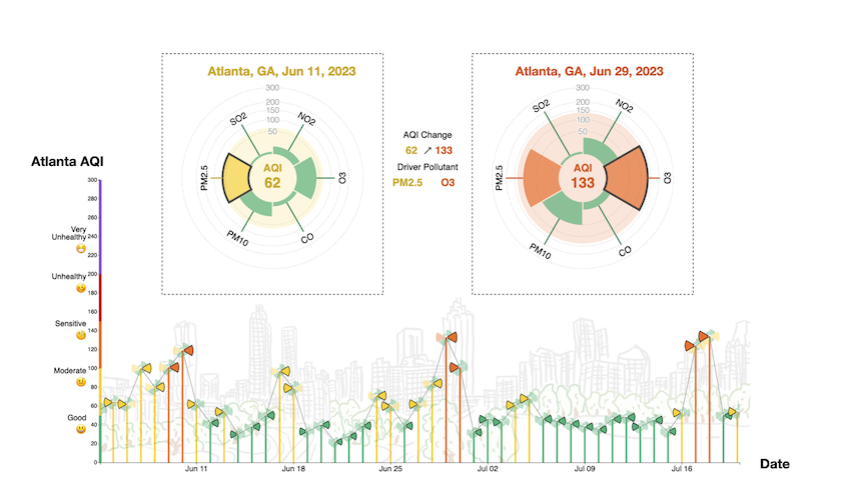Researchers Earn $1.8M to Increase Air Pollution Data Literacy
Jan 10, 2024 —

Air Quality Index (AQI) data
Georgia Tech researchers Jessica Roberts, Alex Endert, and Jayma Koval earned a $1.8 million grant from the National Science Foundation to boost their efforts in promoting air pollution data literacy among middle school students and the public.
The grant will fund the researchers’ top two projects — designing and installing a public information kiosk and organizing a summer camp that uses environmental data to teach data literacy to middle schoolers.
Air Quality Index (AQI) data that is readily available helps people decide whether it’s safe for a morning jog or to send their kids outside to play. However, the researchers want to help people understand the big picture.
“The AQI is good for helping make just-in-time decisions,” said Roberts, an assistant professor in the School of Interactive Computing who researches how technology influences social learning experiences.
“It doesn’t help us think about what’s causing all this. ‘How can I allocate my resources toward pollution mitigation efforts? What should I do as far as where I live and the situation around me?’”
Data visualization provides perspective
Roberts said most people know enough about AQI that they understand safe and dangerous levels, which helps them in the present. However, environmental and air quality data that provides insight into long-term trends and solutions tends to be more complex.
“There are a lot of questions about how to get from this AQI value — this little number on your phone — to all the complex online data repositories that are available,” she said. “Air quality sensors spit out data all the time, but people don’t know how to access them. There’s nothing that bridges this simple number with these complex numbers.”
To solve this problem, Roberts approached Endert, an associate professor in the School of Interactive Computing and faculty member of the Institute for People and Technology, who designs interactive visualization tools that make data more understandable.
“What excites me about this project is that it allows people to reason about their data through the visualization of air quality and places where they live and allows them to ask questions,” Endert said. “‘Why is it worse over here but not as bad where I live? What’s causing that? Why is it bad this time of the year but better at other times?”




